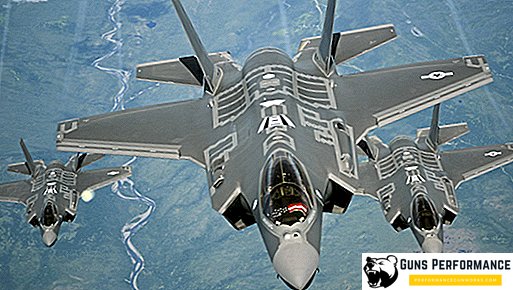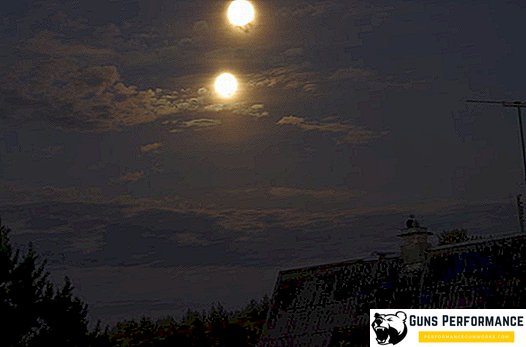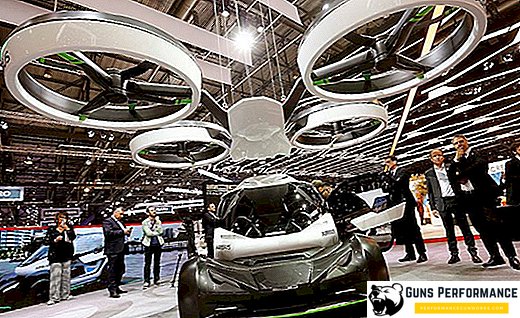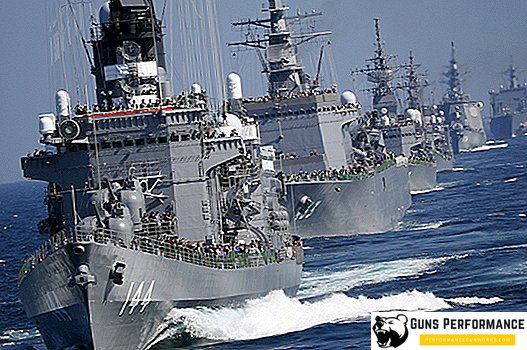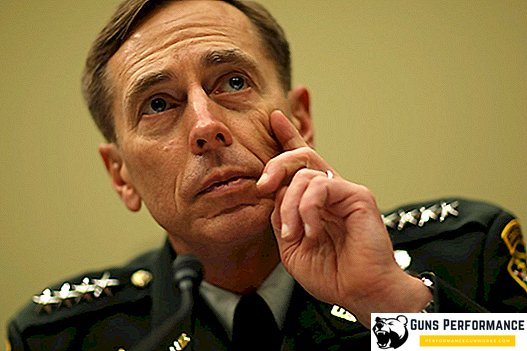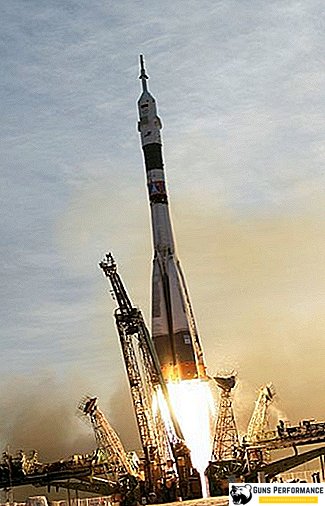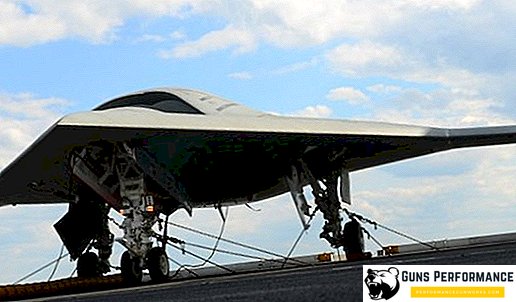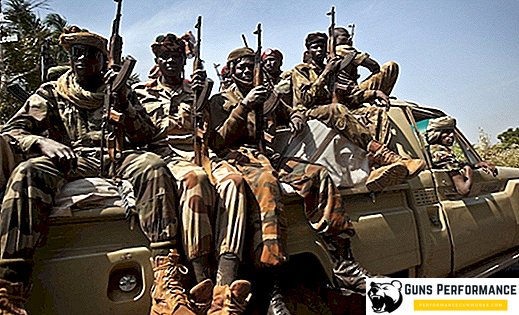During its short existence, the radical Right Sector managed to overcome the path from the main revolutionary driving force and heroic guys from Maidan to the terrorist gangsters and a significant factor of instability, seriously threatening another revolution in the state of Ukraine.
Not long ago, the leaders of the Avtomaydan appeared from the Euromaidanov scene and called on the protesters to come under the Verkhovna Rada. The main requirements then were: repeal the "dictatorial laws of January 16th." The political Euromaidan leaders, Arseniy Yatsenyuk, Vitaly Klitschko and Oleg Tyagnibok, didn’t have a coherent program of follow-up actions at the meeting that day, so a column of people addressed the parliament.
On the Grushevskogo street near the Dynamo stadium, buses and cordons of law enforcement forces blocked her way. The "veveshniki" did not let the protesters pass, and after the verbal exchanges, fighting began. A group of radical activists used pyrotechnics with "Molotov cocktails," as a result, the military buses were completely burned. At that time, no one knew that those who had stormed the positions of the siloviki were already an established militant group with the name "Right Sector".
"Hey, hold up the right sector!"
At first, Euromaidan was positioned as a non-violent protest for the European integration of Ukraine. However, following the tough night dispersal of students by the “Berkut”, it turned out that the Maidan needed a combat wing.
It is believed that the name of the right-wing activists was given by Vladimir Stretovich, associate professor of the Kiev-Mohyla Academy. As if the police somehow thought that people would put up tents, and ran towards a conceivable violation. Stretovich, seeing this movement from the stage, shouted: "Hey, nationalists, stop the right sector, protect the right edge!"
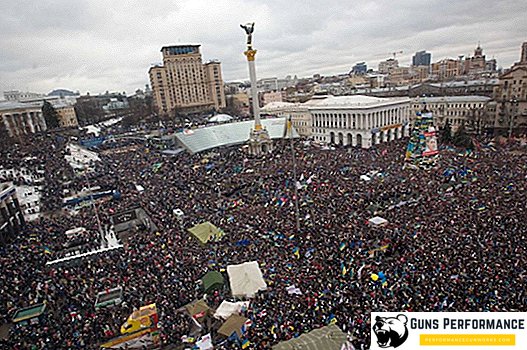
The permanent press secretary of the "Right Sector" Artem Skoropadsky explained that this is just a beautiful myth. He said that the name emerged during the student Euromaidan, saying that even then Ukrainian nationalists understood that the protests would turn to confrontation, and they would throw off power by revolution. To prepare for this, the association "Trizub", "Patriot of Ukraine", the UNA-UNSO and others agreed to coordinate their actions.
The name came up with the help of football fans. The word "sector" is from their football rhetoric. Then on the monument to the Kiev ancestors was the flag of the "Right Sector".
The first battles were still on November 24, but both the organization of the Right Sector and the militants of the right sector “officially” came out on the night of the beating of students. The remaining protesters after the massacre disappeared within the walls of the Mikhailovsky Monastery. Decisive for the formation of force cover protests was the night. Then the activists prepared for the fact that the camp was again attacking and proceeded to unite the Self-Defense detachments, arming themselves with improvised means. The basis of the battle groups were militants of the right sector.
Bank-Grushevskogo
On December 1, hundreds of thousands of people gathered in the central streets of the capital. Using the crowd that had demolished the fences around Maidan, activists seized a couple of buildings. They were used for people who came from the regions. The slaughter on Bankova also did not go without the participation of the Right Sector, although this was not a planned action. Among the attacking security forces near the AP, there were police provocateurs, “brothers of Korchinsky” and fan groups.
It is noteworthy that at that time, and before the intensification of actions on the Grushevsky street, the “Right Sector” did not have a commander. Each organization that joined the association submitted to its leader, but the question arose of making its demands through the media. Many leaders did not want publicity, so they decided that three will act on behalf of PS: Dmitry Yarosh, the current party leader Andrei Tarasenko and the same Skoropadsky.

Later, the field commanders agreed that Dmitry Yarosh would head the PS. If we consider that many prominent nationalists were then under arrest, then the one who could situationally be at the helm, he became.
In periods of calm before the January events in the "Right Sector" recruited new fighters who were preparing for street battles. Despite the fact that the opposition all the time communicated with foreign politicians and Yanukovych’s entourage, the Ukrainian nationalists believed that the revolution would end with the forceful overthrow of power, and its legitimacy after the shaft of excessive use of force was doubtful.
Further, when the "Right Sector" organized duty, it was always possible to transfer up to a hundred fighters to any point. When Avtomaydan was urged to go under the Rada from the stage, the activists of the PS used this to step up actions and attacked the siloviki. They gave fire powder and Vitali Klitschko, who tried to bring people back.
Ukrainian nationalists never got to the ministerial quarters, then everything went into action along with the Molotov cocktails, and ul. Grushevskogo was the bloodiest in Kiev, before the shooting of the Heavenly hundred.
Ukraine is on fire
In July 2014, Dmitry Yarosh announced the creation of the Ukrainian Volunteer Corps in the Right Sector security bloc. He called on his party members and public organizations to cease all inner-party struggle and to sort out relations with the authorities in order to direct all efforts to political, informational and material and technical support for combat activities in the Volunteer Ukrainian Corps of the Right Sector. All those who considered themselves to be involved in the power unit should have come under the command of the Corps.

Those representatives of the power block who do not wish to enter the combat or territorial divisions of the Corps will be considered as having no relation to the "Right Sector". The commander of the corps was appointed Andrew Stempitsky, chief of staff Valery Voronov. Personally, Dmitry Yarosh, on the basis of his posts in social networks, took part in the attack of the Ukrainian army on Donetsk, in the defense of Donetsk airport, as well as in the village Peski adjacent to it.
In 2014-2015, the "Right Sector" was offered to transfer all of its armed forces under the control of the Ministry of Defense of Ukraine and complete legalization. For example, they offered a mandatory service under the contract, however, the Right Sector refused it.
In March 2018, the Right Sector DUK, in the person of its leadership, stated that the ATO headquarters put forward an ultimatum to them: leave April 1 to leave the ATO zone. On which volunteers naturally received a refusal. Moreover, DUK "Right Sector" said that the Ukrainian army will not fight with the "Right Sector". Then the General Staff began the search for compromises.
We discussed a variety of options, for example, the inclusion of "dobrobat" in the already existing brigades to create an autonomous connection, controlled by Yarosh personally. The result of the negotiations was the official appointment of Dmitry Yarosh as adviser to the Chief of the General Staff. And in April, an order was withdrawn to the combat units of the "Right Sector" ALC about withdrawing them from the front line.

Dmitry Yarosh said that for the entire period of armed confrontation in the Donbass, the combat and non-combat casualties of the Right Sector defense training center were as follows: 64 people were killed in the right-wing sector, and more than 500 wounded.
Structural organization of the "Right Sector"
In general, following Euromaidan, many myths emerge around right-wing organizations, including around the "Right Sector". Someone believes that the "pravoseki" in full force are fighting in the Donbas, someone - that they are engaged in "dark business", sitting in the rear. What is really happening in this organization?
In reality, the structural composition of this organization is rather complicated and confusing. Its structure has both military units and a political wing, as well as its own medical service.
Combat units of the Right Sector
The organizational structure of the substation "PS" has "front-line battalions", "reserve battalions", as well as "special units". According to reports, in the Donbass front battalions are involved in the fighting in the amount of two units. This is the fifth and eighth separate battalions.
Thus, the 5th Separate Battalion of the Right Sector carries out service with a deployment in the area of the Donetsk airport, Peskov, as well as at Shakhty, and the 8th separate battalion has to be deployed in the area of the settlement of Shyrokyne. It is not possible to establish the exact number of all ALC fighters on the front, and there is no information about this in open sources. However, something can be found.

Battalions "Right Sector": where and how much
According to some sources who are fairly familiar with the structural organization, the substation "PS" has two types of battalions: reserve and percussion. There are about twenty of them, with a total strength of up to two thousand fighters. Of these, up to seven hundred fighters are incessantly staying in the combat area. In other words, using their army terminology, it can be understood that the composition of the ATO grouping forces possesses one belligerent reinforced (or separate) battalion of the "Right Sector". This is represented by a little more than one percent of the total number of Ukrainian army forces in the Donbas.
The reserve battalions of the “Right Sector” are formations operating in the rear, together with a mobilization reserve. For example, when people undergo rotation, treatment, regular vacation, or recruits, they are assigned to reserve battalions near their places of permanent residence. Strike battalions are those that are directly involved in combat operations at the front. Arithmetically, the distribution in the battalions is not linear. For example, in the first units there may be less than a hundred people, while in the second they may send up to three hundred (to the battalion) to the first front line.
From the words of the commander of the DMU Stempitsky himself in one of his interviews it became known that the Ukrainian regions are covered by seventy percent of the reserve battalions. Moreover, even the numbering and deployment of spare battalions is known.

It all looks like this:
- The first is in the Transcarpathian region;
- The second - in the Lviv region;
- The third - in the Volyn region;
- Fourth - in Ivano-Frankivsk region;
- Sixth - in the Ternopil region;
- Seventh - in the Khmelnytsky region;
- Tenth - in the Rivne region;
- Eleventh - in the Kiev region;
- Twelfth - in the Kherson region;
- The thirteenth is in the hero-city of Kiev;
- Fourteenth - in the Dnipropetrovsk region;
- Fifteenth - in the Kharkiv region;
- The sixteenth - in the Chernivtsi region;
- Seventeenth - in the Poltava region.
Moreover, in several localities there are representatives of initiative groups whose task is to form new reserve battalions in Chernihiv, Kirovograd, Nikolaev and Zhytomyr regions. In fact, this is how the organizational structure of the Right Sector AHM looks like. Everything that goes beyond its limits or something called by some secret groups of the "Right Sector" and so on — this is all fake, ”was noted by Andrey Stempitsky.
What is for the front
Combat training of fighters "Right Sector" to send them to the area of hostilities involved in the two training centers. The course of combat training takes four to six weeks. Run by state polygons "pravoseki" not exposed. According to Stempitsky, when the young recruitment is already in combat units on the front line, all issues relating to weapons are resolved. There are many different mechanisms for obtaining weapons, but this is classified information. However, the reserve battalions do not have weapons at their disposal. Is that only some fighters can own personal, registered, for example, hunting or premium weapons.

In addition, in the area of hostilities, in the anti-terrorist operation zone, according to the statements of the same commander, DUK, two units are fighting. These are separate battalions of the Right Sector: the fifth, commanded by Vladislav the “Black”, and the eighth, commanded by the Friend of Cherven. But that's not all. It also became aware of two separate tactical groups. These are a little smaller units in their structure, fighting in the region of Donetsk and Mariupol. The immediate places of their deployment are classified.
According to one of the speakers in the Presidential Administration of Ukraine on ATO issues, in his comments to one of the famous Ukrainian print media, the following was said. He does not know what the number of fighters "Right Sector" is actively involved in the fighting on the front line, and in what particular hot spots. Nevertheless, he continued, there were no complaints about front-line soldiers from the leadership of the headquarters of the antiterrorist operation.


